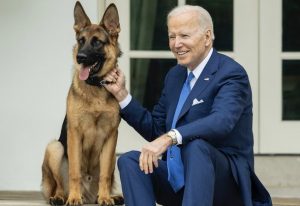What’s worse than losing a pet, according to Mohit Arora, Global Digital Marketing Lead at Pet Nutrition, is the lack of adequate infrastructure to find lost pets and return them to their families. While dogs are known for their loyalty and status as man’s best friend, their inability to communicate is a flaw that causes many pet dogs to go missing each year.
Also Read | King Midas: Four-eared cat from Turkey is internet’s new darling
That is exactly what ForPAWS’ great minds are working on. Mars Incorporated ForPAWS facial recognition tool will aid in the reunification of lost pets with their families. Arora explains the basics of how facial recognition will soon be a reality for dogs, as well as why the need for such tools exists today, in the lead up to the wider rollout of the app.
The need for ForPAWS
Forpaws, as defined by Arora, “is a free service mobile app developed by Mars Pet Nutrition that leverages facial recognition technology and a network of pet-lovers to solve a serious problem of tracking missing pets and helping them find their way home”.
“With ForPAWS we ensure that worried pet parents always have the most reliable help at hand, to locate and bring their pet back if they ever go missing. The initial offering is tailored to solve the problem for dogs only , we are working on a module for cats that will get rolled out in the future,” Arora told The Indian Express.
Also Read | Should you sleep with your pet? Here is what experts say
“With ForPAWS all you require is one photo and a basic smartphone to create a unique ID for your dog,” Arora added.
How exactly will an app find your missing dog?
ForPAWS scans a pet’s facial details from a large database using machine learning. This database will be brimming with unique pet IDs generated by registering their facial data, making the tool function similar to a school/college/office ID card.
This identity card, however, will be one of many in a digital avatar that the app’s servers will be able to access on demand. So, if your dog goes missing, anyone who finds him will be able to use ForPAWS to trace your furry friend back to you, where he or she will be able to contact you directly.
“Our data scientists trained Machine Learning (ML) modules for breed identification and facial recognition. In addition to making the prediction more accurate, they use indicative markers for a particular dog like colour, spots, etc. The ML is currently trained on over 130 breeds and 2,000 unique dogs,” Arora explained, adding that “as the number of pet images increase in our database the ML should become smarter.”
Also Read | Dog owner books entire business class cabin for pet
“One challenge we do face and where we have made a recommendation to our community of pet owners is that of taking a fresh picture of your dog every 6 to 12 months and allowing the ML to use the most recent photo to make a match, as dogs grow faster than humans.
A third-party research conducted more than 750 dogs including “a mix of breed dogs, strays and Indies” returned a 95% match, at a rate of over 90 per cent. “To further improve accuracy we will be looking at indicative markers for a particular dog including the colour, spots, and the location where the dog was lost,” Arora added
“We feel the privacy of consumers and giving them a choice to “opt in and opt out” on sharing data is a mutual way of delivering a free digital service,” he said.
“In case the consumer changes his/her mind after using the application , we have an opt out option in the application where the consumer can ask us to delete any particular, or all information basis his/her comfort level. This way we give the consumer the power to decide how much they wish to share with us.”
While pet parents will benefit from a useful “lost and found” platform, we want to be able to use the information they are willing to share with us to improve pet and pet-parent experiences both online and offline in our efforts to make the world a better place for pets, he said.






